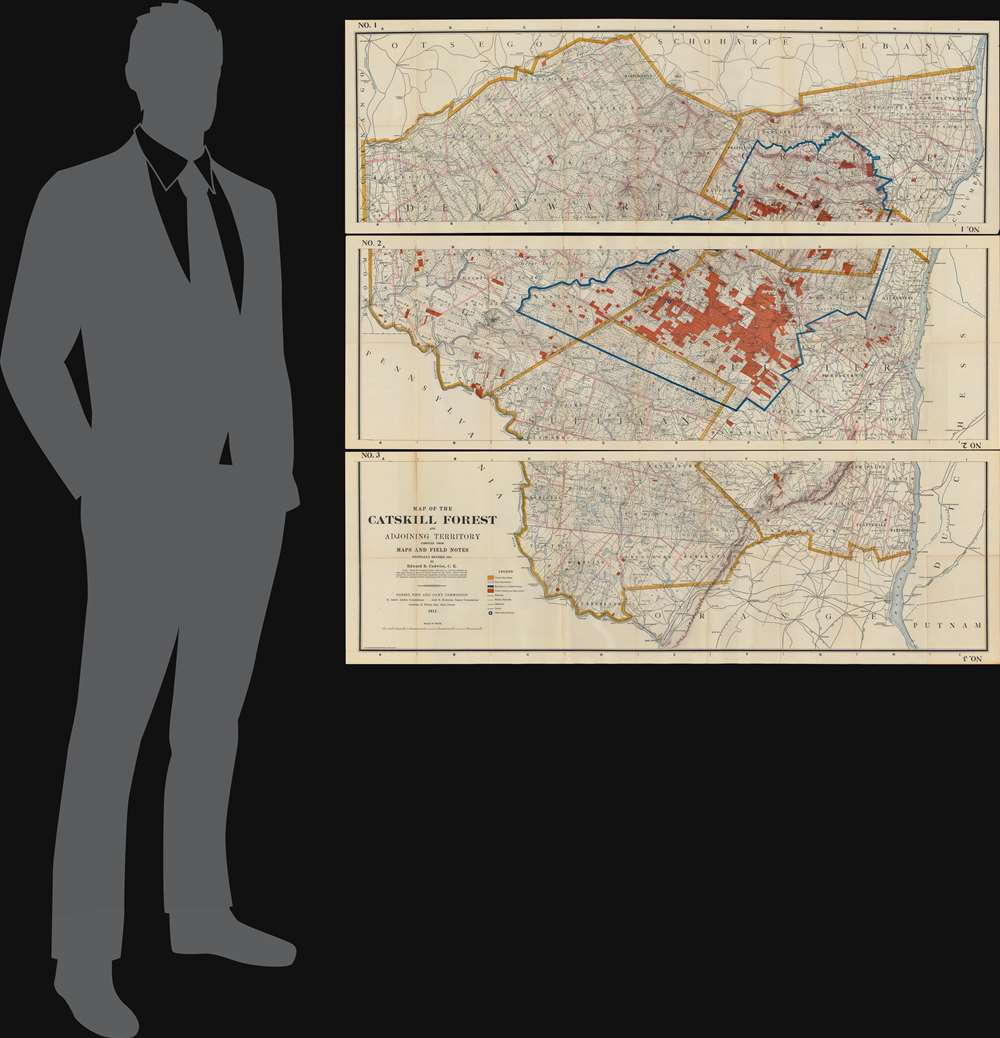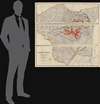Digital Image: 1911 William Fox / Edward Codwise Map of the Catskill Mountains
CatskillForest-codwise-1911_d
Title
1911 (dated) 45 x 45.5 in (114.3 x 115.57 cm) 1 : 125000
Description
FOR THE ORIGINAL ANTIQUE MAP, WITH HISTORICAL ANALYSIS, CLICK HERE.
Digital Map Information
Geographicus maintains an archive of high-resolution rare map scans. We scan our maps at 300 DPI or higher, with newer images being 600 DPI, (either TIFF or JPEG, depending on when the scan was done) which is most cases in suitable for enlargement and printing.
Delivery
Once you purchase our digital scan service, you will receive a download link via email - usually within seconds. Digital orders are delivered as ZIP files, an industry standard file compression protocol that any computer should be able to unpack. Some of our files are very large, and can take some time to download. Most files are saved into your computer's 'Downloads' folder. All delivery is electronic. No physical product is shipped.
Credit and Scope of Use
You can use your digial image any way you want! Our digital images are unrestricted by copyright and can be used, modified, and published freely. The textual description that accompanies the original antique map is not included in the sale of digital images and remains protected by copyright. That said, we put significant care and effort into scanning and editing these maps, and we’d appreciate a credit when possible. Should you wish to credit us, please use the following credit line:
Courtesy of Geographicus Rare Antique Maps (https://www.geographicus.com).
How Large Can I Print?
In general, at 300 DPI, you should at least be able to double the size of the actual image, more so with our 600 DPI images. So, if the original was 10 x 12 inches, you can print at 20 x 24 inches, without quality loss. If your display requirements can accommodate some loss in image quality, you can make it even larger. That being said, no quality of scan will allow you to blow up at 10 x 12 inch map to wall size without significant quality loss. For more information, it is best consult a printer or reprographics specialist.
Refunds
If the high resolution image you ordered is unavailable, we will fully refund your purchase. Otherwise, digital images scans are a service, not a tangible product, and cannot be returned or refunded once the download link is used.
Cartographer S
Edward Bertie Codwise (May 9, 1849 - February 11, 1927) was an American civil engineer active in New York in the late 19th and early 20th centuries. Codwise was born in Elizabeth, New Jersey and lived most of his life in Kingston, New York. He served Kingston as City Engineer from 1902 through 1909, and again in 1916. Between terms as City Engineer, he worked in the Catskill Preserve for the New York State Forest, Fish, and Game Commission. In retirement, he relocated to Morgantown, Wet Virginia, where he died. More by this mapmaker...
William F. Fox (January 11, 1840 - June 16, 1909) was an American engineer, historian, and administrator. He became the Superintendent of Forests at the Adirondack Park in New York State. Fox was born in Ballston Spa, New York to a family in the lumber trade, and graduated Union College in 1860, having studied to become an engineer. Soon enough, any career plans were put on hold with the onset of the American Civil War: He joined the 107th New York Volunteers and fought in the War, receiving a commission and advancing in rank as Captain, Major, and Lieutenant Colonel. He would commit his experiences to paper, contributing to postwar efforts to enumerate the horrors of the conflict: His 'Chances of Being Hit in Battle' was published by Century Magazine in 1888, and the following year he published 'Regimental Losses in the American Civil War.' He wrote a three volume history of the action of New York soldiers at the battle of Gettysburg as well as histories of several Union generals. In addition to his writing, Fox would continue in his family's lumber business; he travelled abroad to study modern methods in the trade, and he worked as a forester on behalf of the Blossburg Coal, Mining and Railroad Company in Pennsylvania. In 1885 he became assistant secretary to the New York State Forest Commission, served as Assistant Forest Warden from 1888 to 1891, and became the first Superintendent of Forests upon the creation of the Adirondack Park in 1892. His work as Superintendent provided the basis for the founding of the New York State College of Forestry at Cornell. Learn More...
Matthews-Northrup Works (fl. c. 1895 - 1930) were a Buffalo, New York based, in their own words, "writing, designing, engraving, printing, [and] binding" firm. The firm was founded by James Newson Matthews (November 21, 1828 - December 20, 1888) as the J. N. Matthews Company. William Phelps Northrup (April 2, 1850 - February 2, 1929) later joined the company as an apprentice and then partner, at which point the firm was reincorporated as the Matthews-Northrup Works. The Matthews-Northrup Works rose to prominence as publishers and printers of railroad maps, with dozens to their credit. When James died, his shares were inhered by George Edward Matthews (1855 - 1910), who ran the business until his death in 1910. Also in 1910, they famously redesigned the cover of National Geographic Magazine. Despite some six previous cover changes in just 21 years, the Matthews-Northrup layout proved so popular that it was used for nearly 50 years. The firm can also take credit for the Winchell typeface, designed in 1903 under E. E. Winchell's tenure as art director. Curiously, the partners of Matthews-Northrup maintained an unusual affectation in which only the officers of the company could wear beards or mustaches. In this same spirit, the firm also had its own private social club, the Fellowcraft Club, where the all-male employees could relax, play pool, drink and dine. Matthews-Northrup maintained offices on Washington Street, Buffalo, where they were based, as well as Madison Square, New York City, Garden Tower, Boston, and the Citizens Building in Cleveland. Learn More...












